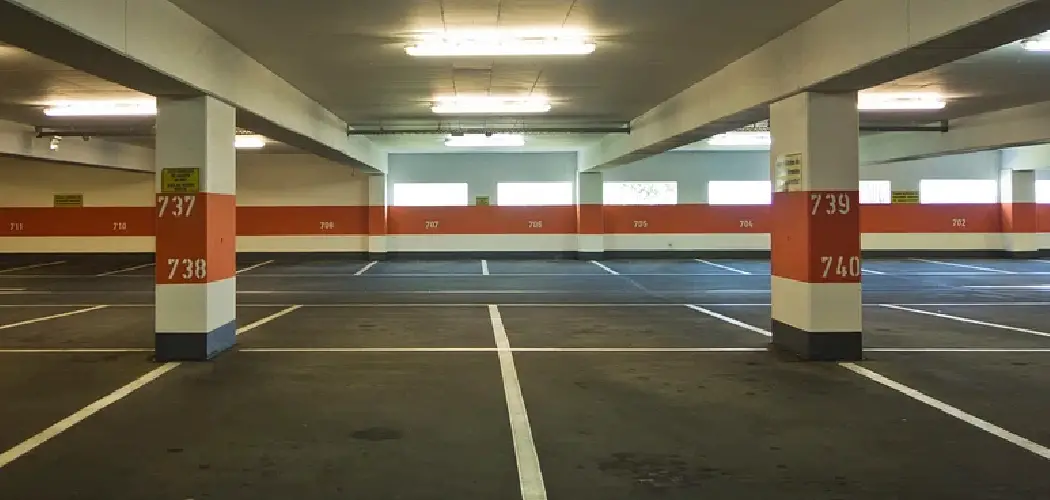Maintaining a dry and condensation-free environment in your garage is essential for preserving the integrity of stored items and preventing potential damage to your vehicle or belongings.
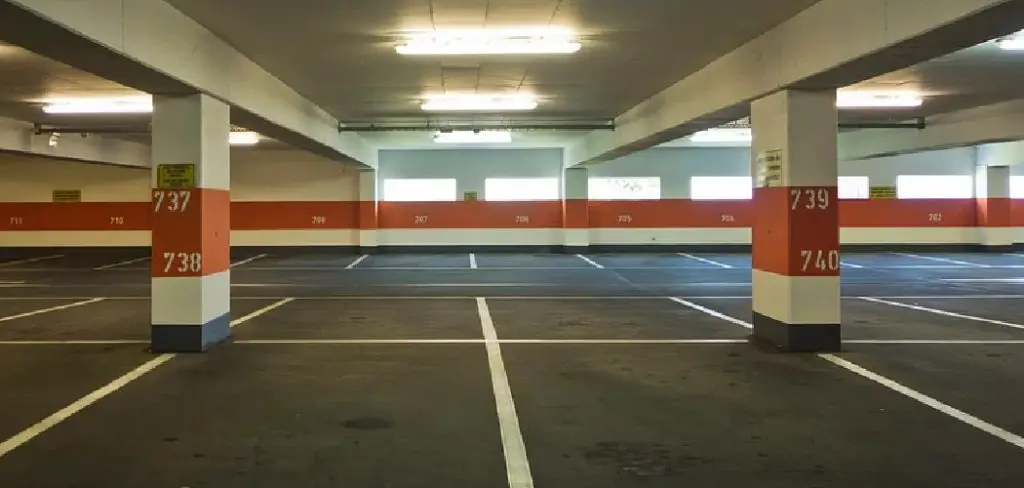
As the often-neglected space of the house, garages are prone to moisture-related issues, especially condensation, which can lead to rust, mold, and other forms of deterioration. Understanding how to keep condensation out of garage involves a combination of proactive measures and practical solutions.
From adequate ventilation systems to proper insulation and moisture-absorbing materials, there are various strategies to mitigate the impact of condensation. In this article, we will explore effective methods to safeguard your garage against excess humidity, providing you with a guide to creating a dry and well-maintained space.
Whether you use your garage for storage, as a workshop, or to park your vehicle, implementing these strategies will contribute to a healthier and more functional environment, ultimately extending the lifespan of your possessions and ensuring the longevity of your garage structure.
Importance of Preventing Condensation in the Garage
In order to understand how to keep condensation out of your garage, it is important to first understand why it is necessary. Condensation occurs when warm and humid air comes into contact with a cooler surface, causing water droplets to form. This can be a common problem in garages due to their typically low insulation levels and lack of ventilation.
There are several reasons why preventing condensation in your garage is important:
- Protects stored items: Many homeowners use their garages as storage spaces for various items such as tools, sports equipment, and seasonal decorations. These items can be damaged by excess moisture caused by condensation.
- Promotes a healthier environment: Mold growth due to condensation not only damages items in your garage, but it can also lead
- Prevents potential health risks: Mold growth in your garage can also pose a threat to your health and the health of your family. Breathing in mold spores can lead to respiratory problems, allergies, and other serious health issues.
- Preserves vehicles: If you use your garage to park your car, it is important to prevent condensation from forming. Excess moisture can cause rust and corrosion, which can significantly decrease the lifespan of your vehicle.
- Maintains structural integrity: Condensation can also cause damage to the structure of your garage over time. This includes wood rot, rust on metal surfaces, and even cracks in concrete floors and walls.
10 Methods How to Keep Condensation Out of Garage
1. Install a Dehumidifier
A dehumidifier is an effective way to reduce the amount of moisture in your garage. It works by drawing in air from the room and passing it through a filter, which removes excess moisture from the air. This helps to keep your garage dry and prevents condensation from forming on walls and other surfaces. Additionally, a dehumidifier can also help to reduce allergens in the air, such as dust mites and mold spores.
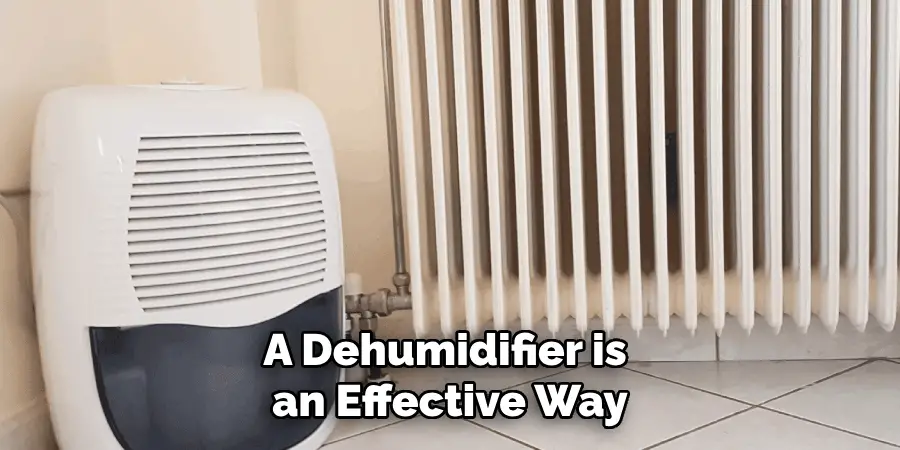
2. Increase Ventilation
Increasing ventilation in your garage can help to reduce condensation levels by allowing moist air to escape more quickly. You can do this by opening windows or installing an exhaust fan in the garage. Additionally, you can also use a portable fan to circulate air throughout the space.
3. Use Weather Stripping
Weather stripping is a great way to prevent warm, moist air from entering your garage during cold weather months. You can install weather stripping around windows and doors to help keep out drafts and reduce condensation levels inside the space.
Additionally, weather stripping can also help to reduce energy costs by preventing heated or cooled air from escaping your home through cracks and gaps around door frames and window frames.
4. Insulate Your Garage Walls
Insulating your garage walls is another effective way to reduce condensation levels inside the space. Insulation helps to keep warm air inside during winter months and cool air inside during summer months, which reduces the risk of condensation forming on walls and other surfaces in the room.
Additionally, insulation can also help to make your home more energy efficient by reducing energy costs associated with heating or cooling your home during different seasons of the year.
5. Seal Gaps & Cracks Around Windows & Doors
Sealing gaps and cracks around windows and doors can help prevent warm, moist air from entering your garage during cold weather months when condensation is more likely to form on surfaces inside the space.
You should inspect these areas for any signs of damage or wear-and-tear that could be allowing warm air into the room; if you find any damaged areas, you should repair them immediately with caulk or weather stripping material before sealing them off completely with paint or sealant material for extra protection against drafts and moisture infiltration into the room.
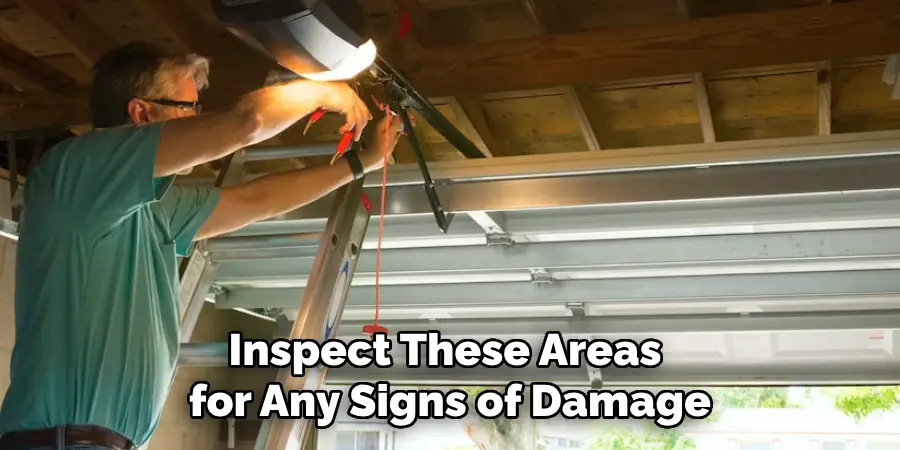
6. Clean Gutters & Downspouts
Cleaning gutters and downspouts regularly is important for keeping water away from your home’s foundation which will prevent it from seeping into your basement or crawlspace where it could cause mold growth due to high humidity levels; this will also help keep moisture away from your garage as well since water runoff from gutters often runs along exterior walls near garages where it could lead to increased levels of condensation formation if not properly managed with regular gutter cleaning maintenance tasks throughout each season of the year!
7. Install Vents Near The Floor
Installing vents near floor level is important because they allow hot humid air that has risen up near ceilings due to convection currents (hot air rises) an escape route out of enclosed spaces like garages without having it infiltrate living areas like bedrooms above garages;
this will also create an airflow that will draw in cooler drier outside air at lower levels while pushing out warmer humid interior air near ceiling heights – both processes helping maintain balanced humidity levels within enclosed spaces like garages that are prone towards excessive moisture accumulation due higher temperatures than outside ambient temperatures!
8. Install Exhaust Fans
Installing exhaust fans in garages will increase airflow circulation, which helps remove excess humidity build-up due to higher temperatures within enclosed spaces; these fans work best when installed near ceilings so they can draw out hot, humid interior air while simultaneously drawing cooler, drier outside ambient temperature into lower level areas creating ideal conditions for maintaining balanced humidity levels throughout all parts of an enclosed space like a garage!
9. Use Desiccants To Absorb Moisture
Desiccants are materials that absorb moisture so they’re perfect for controlling humidity within enclosed spaces like garages; common desiccants include silica gel packets which are available at most hardware stores but there are many other types available depending on specific needs –
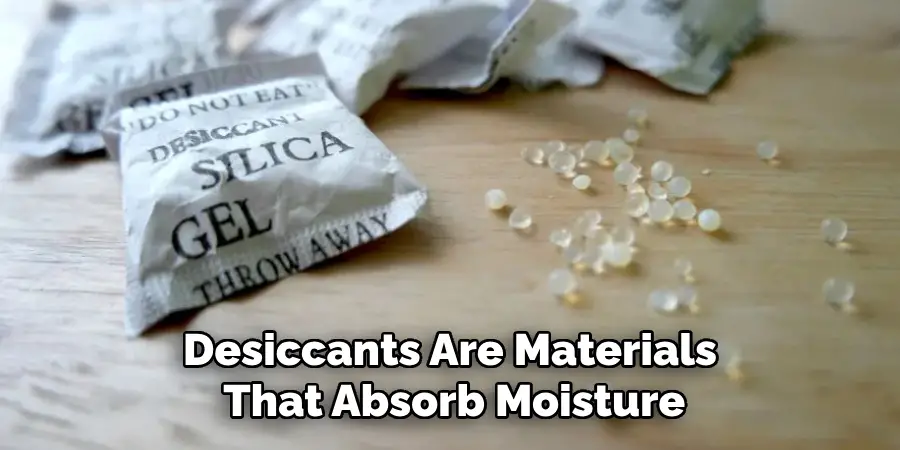
some desiccants may need replacing periodically while others may last indefinitely depending on how much moisture needs absorbing!
10. Keep Humidity Levels Low With Air Conditioning/Heating Systems
Using an HVAC system (heating/ventilation/air conditioning) system within a garage will help maintain low humidity levels throughout all seasons – this works best when combined with proper insulation as well as venting solutions mentioned previously so hot humid interior temperatures don’t rise too high causing excessive amounts of condensation formation on walls, ceilings, and flooring surfaces within enclosed spaces like garages!
Things to Consider When Keeping Condensation Out of Garage
If you have a garage at home, it is important to maintain it properly. One common issue with garages is the presence of condensation on walls and floors. This can be caused by temperature changes or humidity, which can lead to mold growth and damage to your belongings stored in the garage. In order to keep condensation out of your garage, there are a few things you should consider.
Ventilation
One of the main causes of condensation in garages is lack of proper ventilation. If your garage does not have enough air flow, moisture can build up and lead to condensation. To prevent this, make sure that your garage has proper ventilation such as windows or vents. You can also install exhaust fans to help circulate air and reduce humidity.
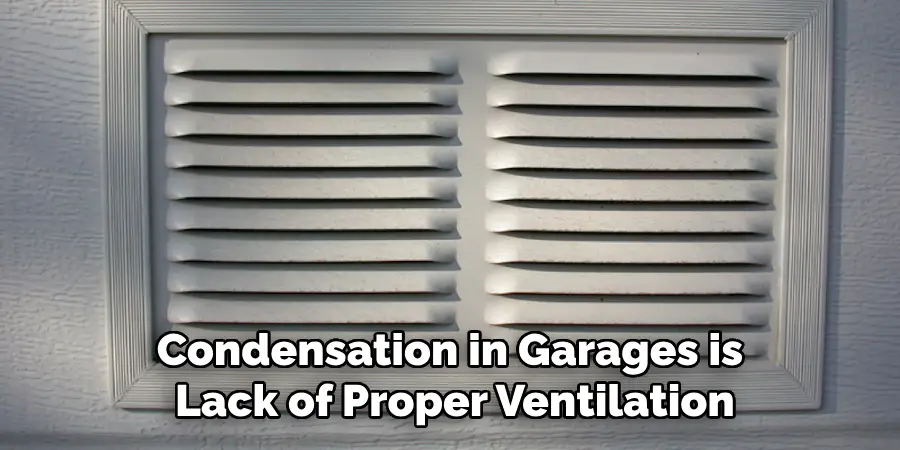
Insulation
Insulating your garage can also help keep condensation at bay. By adding insulation, you can regulate the temperature inside your garage and reduce the risk of moisture build up. This is especially important if your garage is attached to your home, as it can also prevent heat loss during colder months.
Conclusion
In conclusion, condensation in the garage can be an aggravating problem. But using the tips we have discussed today, you can make sure to get ahead of the moisture buildup and keep your garage dry and content to all your belongings. It is also important to keep on top of the temperature changes within the garage itself as well as outside.
Ensuring a stable humidity level by using dehumidifiers, venting with fans, or running air conditioned will help while keeping out any would-be moisture-filled air from coming into direct contact with your tools or walls.
With a few timely preventative measures such as these, you can safeguard your garage against condensation. All that’s left for you to do now is experiment and find what works best for how to keep condensation out of garage!

